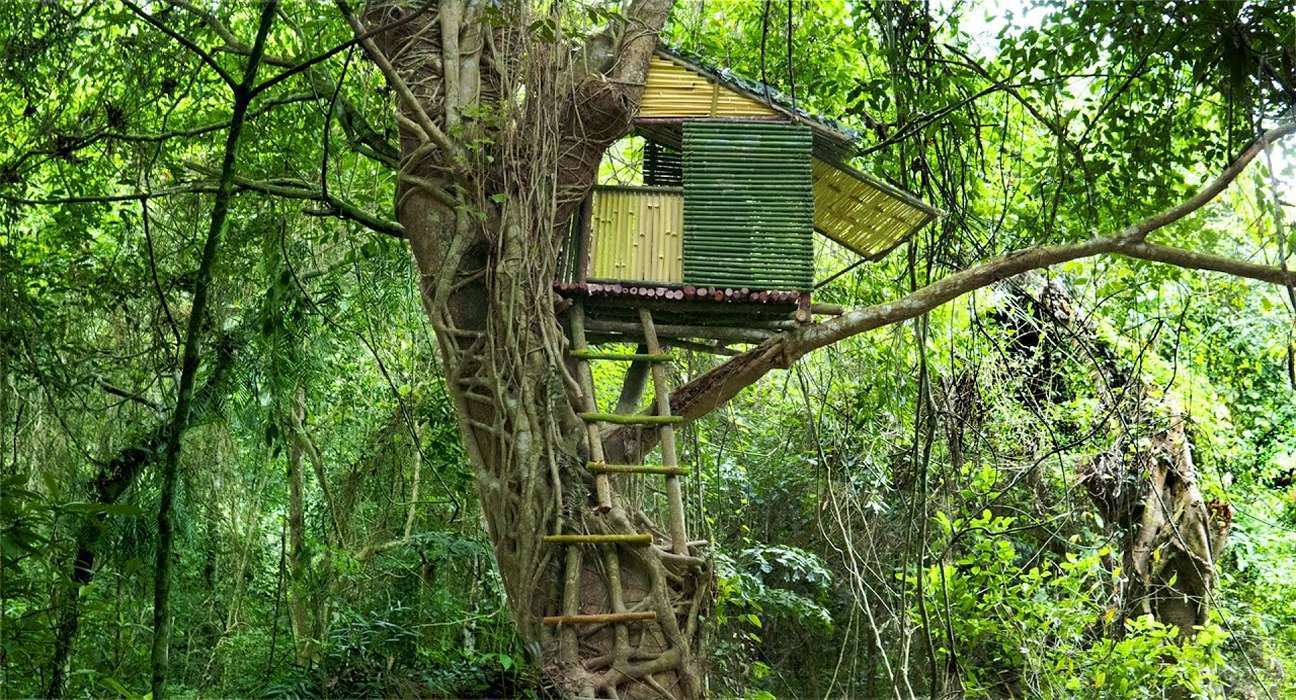Embracing Nature: Creating a bamboo House in the Heart of the Forest

Introduction:
Nestled in the enchanting embrace of the forest, the concept of a bamboo House introduces a harmonious blend of sustainable living and immersive natural surroundings. Inspired by the desire to coexist with nature, a bamboo House offers a unique and tranquil living experience. In this article, we explore creative ideas to design and build a bamboo House in the heart of the forest.
1.Locating the Perfect Spot:
Begin by selecting a site that is in harmony with the natural landscape. A clearing with sufficient sunlight and access to natural resources is essential. Consider the orientation of the house to maximize sunlight and ventilation, reducing the need for artificial lighting and air conditioning.
2.Materials in Sync with Nature:
Embrace eco-friendly materials for construction. Use locally sourced wood, stone, and other sustainable materials to minimize the environmental impact. This not only adds a rustic charm to your bamboo House but also ensures that the building materials have a minimal carbon footprint.
3.Open Design Concept:
Design the house with large windows and open spaces, allowing the forest to become an integral part of the living experience. Consider using glass walls or sliding doors to create a seamless connection between the interior and exterior. This design philosophy not only brings in natural light but also offers breathtaking views of the surrounding forest.
4.Off-the-Grid Living:
Embrace sustainable technologies to make your bamboo House self-sufficient. Install solar panels, rainwater harvesting systems, and composting toilets. Opt for energy-efficient appliances and use smart home technology to monitor and control energy consumption.
5.Minimalist Furnishings:
Keep the interior design simple and minimalistic to maintain a sense of openness. Use natural, locally crafted furniture made from sustainable materials. Consider multifunctional pieces that serve more than one purpose, promoting a clutter-free and efficient living space.
6.Vegetation Integration:
Incorporate vegetation within the house to blur the lines between indoor and outdoor spaces. Create an indoor garden or install a green roof to enhance insulation and create a cooling effect. This not only adds to the aesthetics but also contributes to the overall well-being of the inhabitants.
7.Outdoor Living Spaces:
Extend your living space outdoors with decks, patios, or even a treehouse-inspired platform. These outdoor spaces can serve as relaxation areas, dining spots, or places for connecting with the natural environment. Consider using natural materials for outdoor furniture to maintain a cohesive design.
8.Community Engagement:
Foster a sense of community by creating shared spaces for gatherings and activities. This could include communal gardens, fire pits, or a community kitchen. Encouraging a collaborative and supportive environment among inhabitants enhances the overall bamboo House experience.
Conclusion:
A bamboo House in the forest is more than just a dwelling; it’s a commitment to sustainable living and a celebration of the beauty that nature provides. By integrating eco-friendly practices, embracing minimalist design, and connecting with the local community, a bamboo House becomes a haven where residents can thrive in harmony with the forest that surrounds them.











